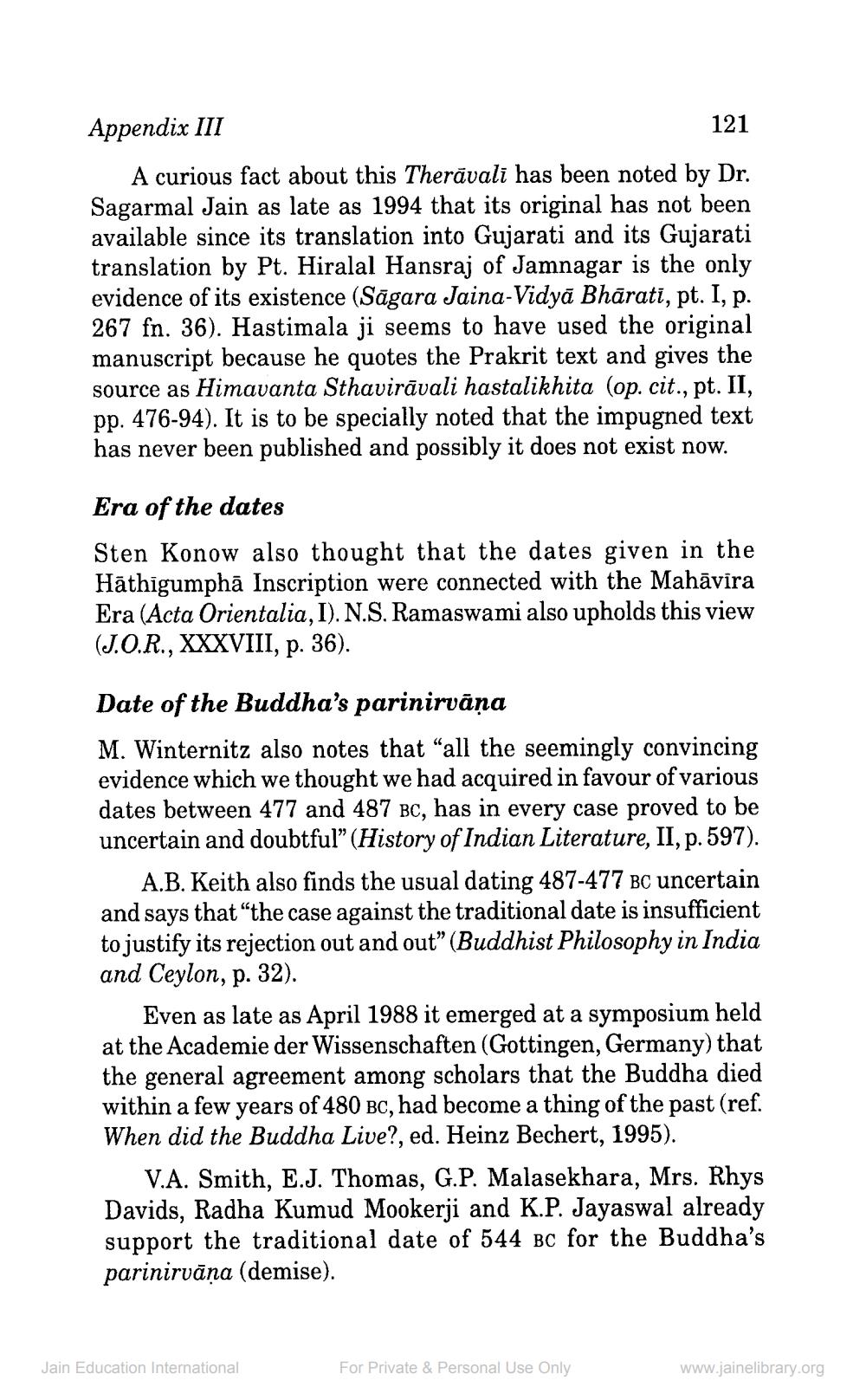________________
Appendix III
121
A curious fact about this Therāvali has been noted by Dr. Sagarmal Jain as late as 1994 that its original has not been available since its translation into Gujarati and its Gujarati translation by Pt. Hiralal Hansraj of Jamnagar is the only evidence of its existence (Sāgara Jaina-Vidyā Bhārati, pt. I, p. 267 fn. 36). Hastimala ji seems to have used the original manuscript because he quotes the Prakrit text and gives the source as Himavanta Sthavirāvali hastalikhita (op. cit., pt. II, pp. 476-94). It is to be specially noted that the impugned text has never been published and possibly it does not exist now.
Era of the dates Sten Konow also thought that the dates given in the Hāthīgumphā Inscription were connected with the Mahāvīra Era (Acta Orientalia, I). N.S. Ramaswami also upholds this view (J.O.R., XXXVIII, p. 36).
Date of the Buddha's parinirvāņa M. Winternitz also notes that “all the seemingly convincing evidence which we thought we had acquired in favour of various dates between 477 and 487 BC, has in every case proved to be uncertain and doubtful” (History of Indian Literature, II, p. 597).
A.B. Keith also finds the usual dating 487-477 BC uncertain and says that “the case against the traditional date is insufficient to justify its rejection out and out” (Buddhist Philosophy in India and Ceylon, p. 32).
Even as late as April 1988 it emerged at a symposium held at the Academie der Wissenschaften (Gottingen, Germany) that the general agreement among scholars that the Buddha died within a few years of 480 BC, had become a thing of the past (ref. When did the Buddha Live?, ed. Heinz Bechert, 1995).
V.A. Smith, E.J. Thomas, G.P. Malasekhara, Mrs. Rhys Davids, Radha Kumud Mookerji and K.P. Jayaswal already support the traditional date of 544 bc for the Buddha's parinirvāņa (demise).
Jain Education International
For Private & Personal Use Only
www.jainelibrary.org




